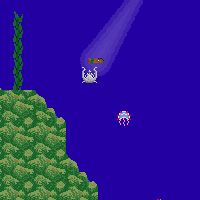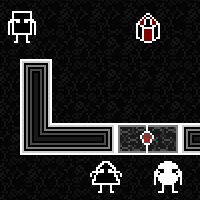For many of us, games occupy a special space. We play games to escape, or be entertained, or to feel things that are hard to get from everyday life: terror, brain-bending challenge, or victory over an opponent. Because games represent a different world, it can enhance our experience to emphasize that separation. Some gamers have a special spot in the living room where they game, or a pair of headphones that only get used for games. Maybe you turn off the lights, or have a certain dice bag that represents the transition into the gaming space.
Burnout Paradise
Recently, I’ve resumed playing Criterion Games’s Burnout Paradise, an open-world car stunt and racing game. When you start a game of Burnout Paradise, you’re greeted at the pre-menu loading screen with the opening bars of Guns N’ Roses’s song “Paradise City.” This song plays through the menu experience, and continues to play even when you start the game. The song always plays once when you start, and then the game’s background music proceeds to whatever selection it’s picking from.
“Paradise City” serves as a theme song, marking the transition from the “real world” to “game space.” Because you hear the song every time you play, it serves as an almost Pavlovian trigger. The song becomes associated with the fun and the action of the game, so it helps to put you in the mood for the game as soon as you start it up.
Alan Wake
Remedy Entertainment’s Alan Wake has a structure that also lends itself to a transition into the game space. Instead of levels or sections, Alan Wake is divided into “episodes.” Each episode ends with a large “end of episode” message, a credits song, and usually a cliffhanger. The next episode then starts with a “last time on Alan Wake” montage, reviewing the story so far. This helps keep the player up-to-date on the (somewhat convoluted) plot and helps to break up the game.
This technique would be even more effective if it were incorporated into the game’s start-up experience. When an episode ends, it presents a natural stopping point, but the player is instead sent directly into the next episode. Instead, the developers should have returned the player to the main menu, to view the new episode-related main menu background and manually start the next episode. This way, the end of an episode would encourage the player to transition back to the real world, and it would be more natural to resume the game before the review montage instead of just afterward.
Tales of Monkey Island
It would be especially effective if Alan Wake dynamically generated a review montage every time the game started, showing the current episode’s intro and then short clips of what had been accomplished so far. Telltale Games’s Tales of Monkey Island episodic game series does this in text form; the game greets you with a short review of the story so far to welcome you to the game experience. With Alan Wake‘s greater development time and budget, it could have contained a video form of the same idea.
Too often, games make the start-up process and menu system an afterthought. While a game might be stylistically excellent, the initial user experience is frequently marred by long unskippable sponsor logos or simple, dull menus. It can be jarring to move from a spartan main menu into a rich game world. Instead, games should take a lesson from Burnout Paradise, Tales of Monkey Island, and Alan Wake: welcome the player into the game space from the moment the application starts, and make the menu experience one that facilitates the transition into the world of the game.

 I’ve resumed writing for
I’ve resumed writing for 
 Early in March, I
Early in March, I 
 A fragment from an imaginary walkthrough to my current work-in-progress, “Ossuary:”
A fragment from an imaginary walkthrough to my current work-in-progress, “Ossuary:”